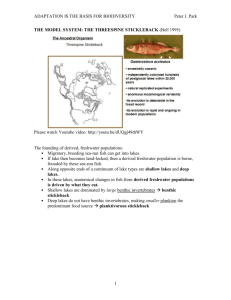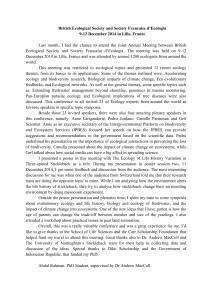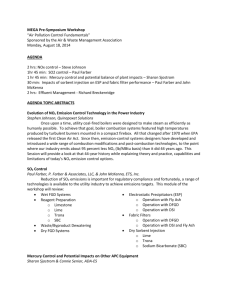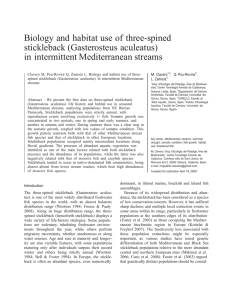ECOLOGICAL DRIVERS OF MERCURY ACCUMULATION IN
advertisement
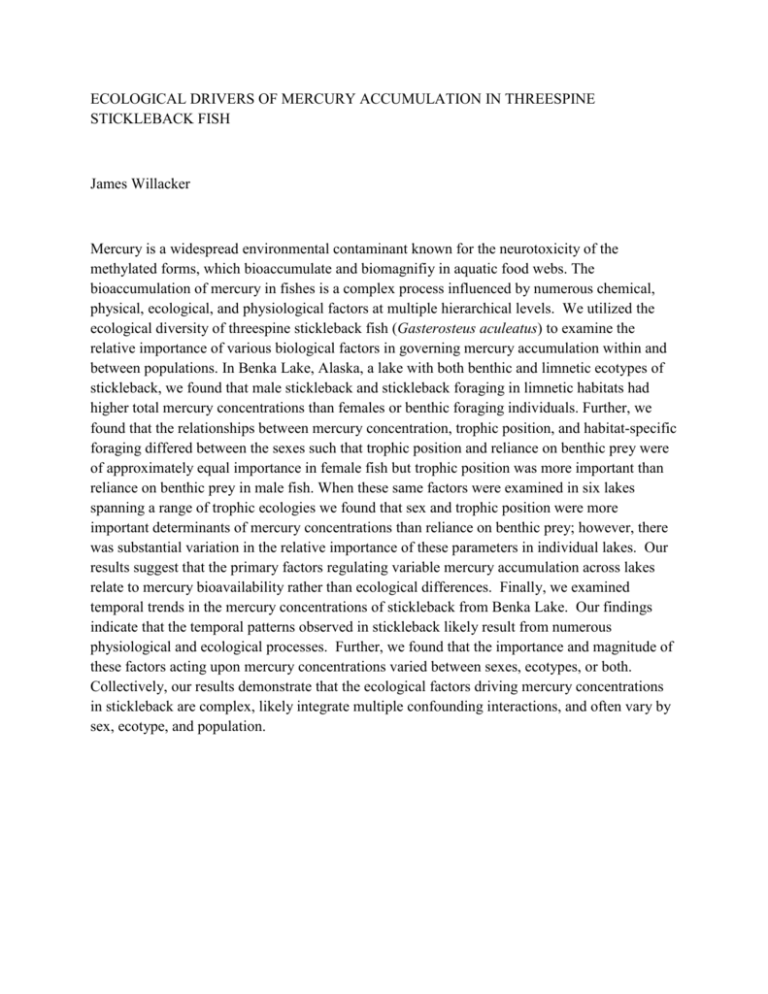
ECOLOGICAL DRIVERS OF MERCURY ACCUMULATION IN THREESPINE STICKLEBACK FISH James Willacker Mercury is a widespread environmental contaminant known for the neurotoxicity of the methylated forms, which bioaccumulate and biomagnifiy in aquatic food webs. The bioaccumulation of mercury in fishes is a complex process influenced by numerous chemical, physical, ecological, and physiological factors at multiple hierarchical levels. We utilized the ecological diversity of threespine stickleback fish (Gasterosteus aculeatus) to examine the relative importance of various biological factors in governing mercury accumulation within and between populations. In Benka Lake, Alaska, a lake with both benthic and limnetic ecotypes of stickleback, we found that male stickleback and stickleback foraging in limnetic habitats had higher total mercury concentrations than females or benthic foraging individuals. Further, we found that the relationships between mercury concentration, trophic position, and habitat-specific foraging differed between the sexes such that trophic position and reliance on benthic prey were of approximately equal importance in female fish but trophic position was more important than reliance on benthic prey in male fish. When these same factors were examined in six lakes spanning a range of trophic ecologies we found that sex and trophic position were more important determinants of mercury concentrations than reliance on benthic prey; however, there was substantial variation in the relative importance of these parameters in individual lakes. Our results suggest that the primary factors regulating variable mercury accumulation across lakes relate to mercury bioavailability rather than ecological differences. Finally, we examined temporal trends in the mercury concentrations of stickleback from Benka Lake. Our findings indicate that the temporal patterns observed in stickleback likely result from numerous physiological and ecological processes. Further, we found that the importance and magnitude of these factors acting upon mercury concentrations varied between sexes, ecotypes, or both. Collectively, our results demonstrate that the ecological factors driving mercury concentrations in stickleback are complex, likely integrate multiple confounding interactions, and often vary by sex, ecotype, and population.

